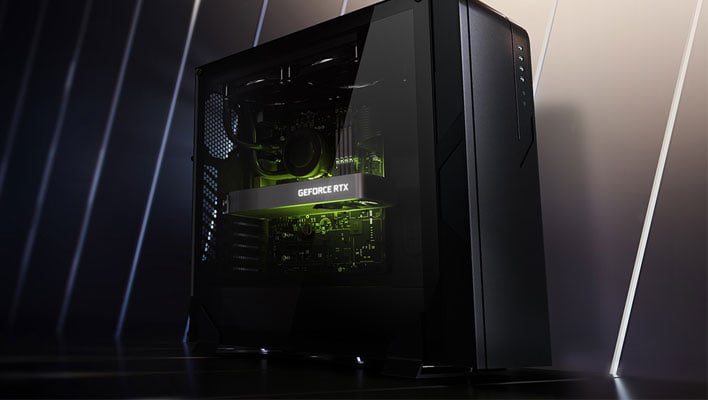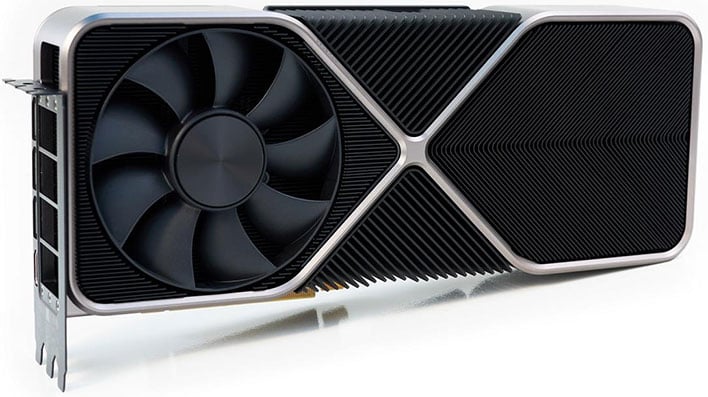Here's Your Fix For NVIDIA's GeForce GPUs Stuttering In Games On Windows 11 PCs

The first major update to Windows 11 (version 22H2) brought with it some nifty new features and security upgrades, but unfortunately it also caused major headaches for some GeForce owners. Complaints included dropped framerates, game stuttering, broken G-Sync functionality, and other annoying issues. Fortunately, NVIDIA was quick to issue a fix.
Shortly after the buggy behavior came to light, NVIDIA hopped on Twitter with a message saying its GeForce Experience 3.26 beta software was available, and that it resolves performance issues related to the Windows 11 22H2 update. If you were wary about installing beta software, though, we have good news—NVIDIA has followed that up with a stable driver release.
The 517.48 WHQL driver update bumps up GeForce Experience to version 3.26.0.131. More importantly, it purportedly squashes the bugs that were wreaking havoc for affected users. It also introduces a host of additional fixes. They include...
- [Advanced Optimus] Brightness setting is not getting applied correctly on certain Lenovo notebooks in dedicated GPU mode.
- [Windows 10][Advanced Optimus]: On certain notebook configurations, “NVIDIA GPU only” option does not persist on system reboot.
- [Adobe Illustrator] Using Reduce Noise with Ray Tracing appears pixelated.
- [Windows 11] Chaos Vantage fails to start when NVLink is enabled.
- [Adobe Photoshop] Resolves random crashes in DirectML.dll.
- [Fusion 360] Addresses performance issues when using variable refresh rate monitors.
- On rare occasions, video playback in browser may result in bugcheck code: 0x116.
- [Jurassic World Evolution 2] Game may display shadow flickering.
- Native resolution is not available on the Samsung U28R55/ ASUS VG249Q1A monitors.
- [Windows 11] Some UWP apps may display lag when G-Sync is set to "Enable G-Sync for windowed and full screen mode" and "Vertical sync" is changed from the default value.
- Resolves incorrect wording for NVIDIA Control Panel -> Manage 3D Settings -> Shader Cache Size in German language.
- External displays connected to certain Razer notebooks via USB-C/Thunderbolt docks/dongles are not detected.
- [Reallusion Hub] App will crash when launched on PC using a CPU with 32+ logical processors.
- [DirectX 12] Microsoft Flight Simulator may display texture corruption after extended gameplay.

Microsoft is taking a staggered approach to rolling out its Windows 11 22H2 update, so you may have dodged the erratic behavior that plagued some early adopters. However, as you can see in the list above, there are quite a few other issues that the latest GeForce GPU driver resolves and not just in Windows 11.
Known Issues Affecting Some GeForce GPU Owners
That said, the release notes also highlight over a half a dozen known issues that will purportedly be addressed in a future update. They include...
- Toggling HDR on and off in-game causes game stability issues when non-native resolution is used.
- Videos played back in Microsoft Edge may appear green if NVIDIA Image Scaling is enabled upon resuming from hibernate or booting with fastboot.
- [DirectX 12] Shadowplay recordings may appear over exposed when Use HDR is enabled from the Windows display settings.
- Monitor may briefly flicker on waking from display sleep if DSR/DLDSR is enabled.
- [RTX 30 series] Lower performance in Minecraft Java Edition.
- [Forza Horizon 5] Rainbow like artifacts in game after driver update.
- [Marvel Spider-Man Remastered] Cutscene edges may appear blurry when DLSS is enabled on an ultra-wide monitor
- Dell XPS 9560 may crash and reboot when using desktop applications.
If you're experiencing any of the above, well, hang tight.
Beyond the bug fixes, NVIDIA says its 517.48 WHQL driver release is optimized for Overwatch 2, which Blizzard is planning to release on October 4, and adds DLSS support for Microsoft Flight Simulator.
You can grab the latest driver through NVIDIA's GeForce Experience utility, or head to the driver download page for a manual install.

